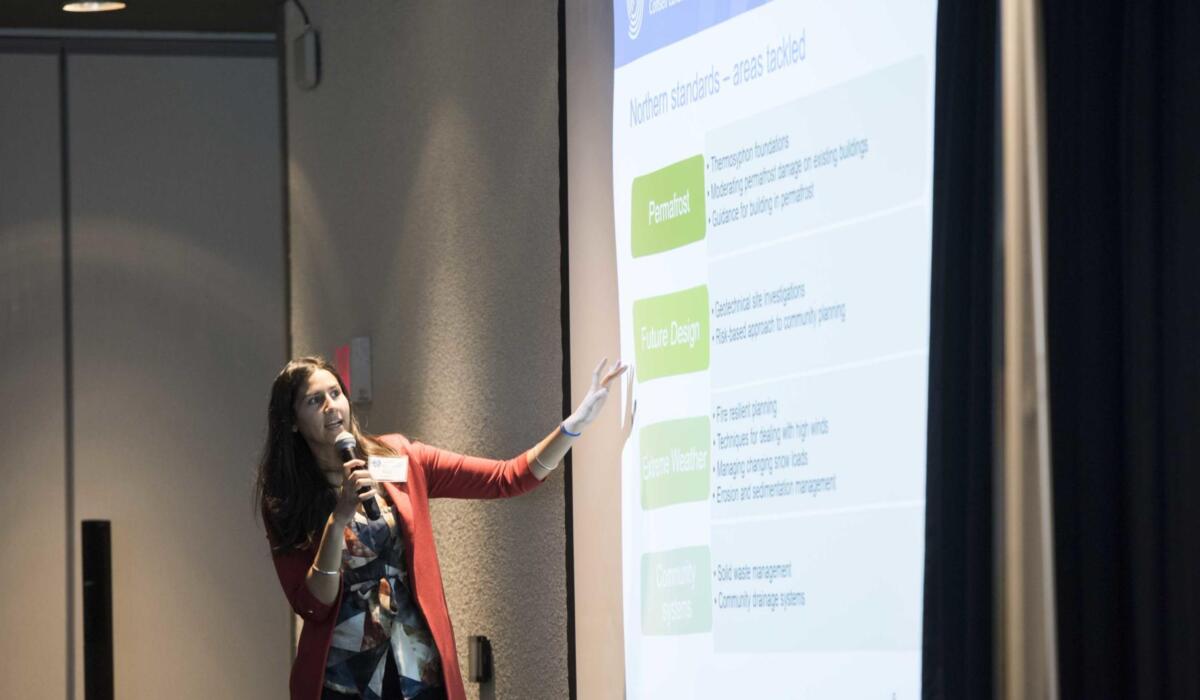While often overlooked, having finely tuned communications skills is essential for any successful engineer or geoscientist. That’s why we’ve written this communications 101.
You may have noticed that we’re using the term communications, with an “s.” That’s because it’s different from communication skills, which means more simply the exchange of language and meaning among humans.
Communications, by contrast, refers to the strategic crafting of messaging and the choices of which mediums, technologies or channels should be used to reach different audiences.
For example, if you are giving a presentation to a room of industry peers you may make certain choices regarding your messaging, examples, and images. These would likely be different choices than if you were invited to give a presentation at a high school.
Whether you realize it or not, you are actively making communications choices in your day-to-day work. And like all of us, you may be able to more effectively communicate your work once you start viewing it through the lens of communications.
Here are five easy tips on how you can get started:
1. Choose a goal
When you start a project that involves communicating with colleagues, the public, or other industry professionals, think clearly about the “why?” behind the work.
Perhaps it is to get approval to move forward with a new project. Or, to showcase your expertise and by extension, the expertise of your firm. Regardless of the goal, be sure you understand and be clear about what you are hoping to achieve. This will help inform the rest of your decisions.
2. Know who your audience is
Once you know what you are aiming to achieve, think about your audience. Who will you be speaking to? Are they industry peers, internationally-trained professionals bringing a different perspective, or representatives from an Indigenous community that may have certain cultural protocols?
Depending on who your audience is, you may make different choices when it comes to your messaging. For example, you may take extra care not to use industry acronyms to ensure your audience understands a complicated subject. You may use examples in your communications that will resonate with their experiences or communities more than others. You may need to ensure you are following cultural protocols.
If you feel you don’t understand your audience well enough to make these kinds of choices, seek additional support from peers or consultants who can offer insight.
3. Choose the right medium for your message
Now that you know your goal and your audience, you need to choose the right medium for your message. Mediums can include email, web/in-person presentations, video, social media, magazine advertising, radio and other news sources, and more.
If you are trying to engage with a younger audience at a university, you’d be wise to stay away from PDF email invites and text-laden powerpoint presentations. Instead, you might advertise on social media and offer an engaging Q+A industry panel discussion.
In addition, providing your messaging in multiple formats and through multiple communications channels can be helpful to help achieve your goal. If you are giving a presentation to a small team of peers, something as simple as preparing and sending a summary deck afterwards via email can help reinforce your message.
4. Ensure your communications are accessible
Once you start working on your communications products, you should ensure that they are accessible to everyone. Here are a few tips to consider:
- Include closed captioning during meetings or web-based presentations (click here to learn how to enable it on Zoom)
- Use at least 18 pt, sans serif fonts in all presentation decks for those who may be visually impaired.
- Include alternative text on all images, including on presentation decks. Alternative text describes the image for those who are visually impaired.
- Ensure venues where you are holding meetings are fully wheelchair accessible.
5. Ensure your communications are inclusive
Even well-intentioned messages can harm relationships and break trust with stakeholders if special care is not taken to be sure they are inclusive.
It is important to consider how different audiences may interpret different messages, or how your messages may contain multiple meanings depending on cultural contexts.
The best way to ensure your communications are inclusive is to be open to listening, reading and learning from different communities. You may wish to participate in Indigenous cultural protocol or corporate training, or read resources like Elements of Indigenous Style: A Guide for Writing By and About Indigenous Peoples by Dr. Gregory Younging.
An example given by Dr. Younging (Principle 18) of a common error is calling Indigenous people in Canada, “Canada’s Indigenous people.” Instead, “Indigenous Peoples in Canada” is preferred.
Language is powerful and it is essential to give careful consideration to the words being used in your messaging.

